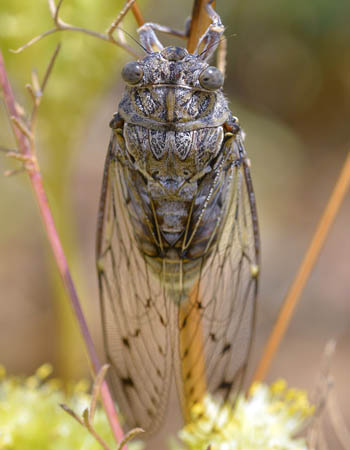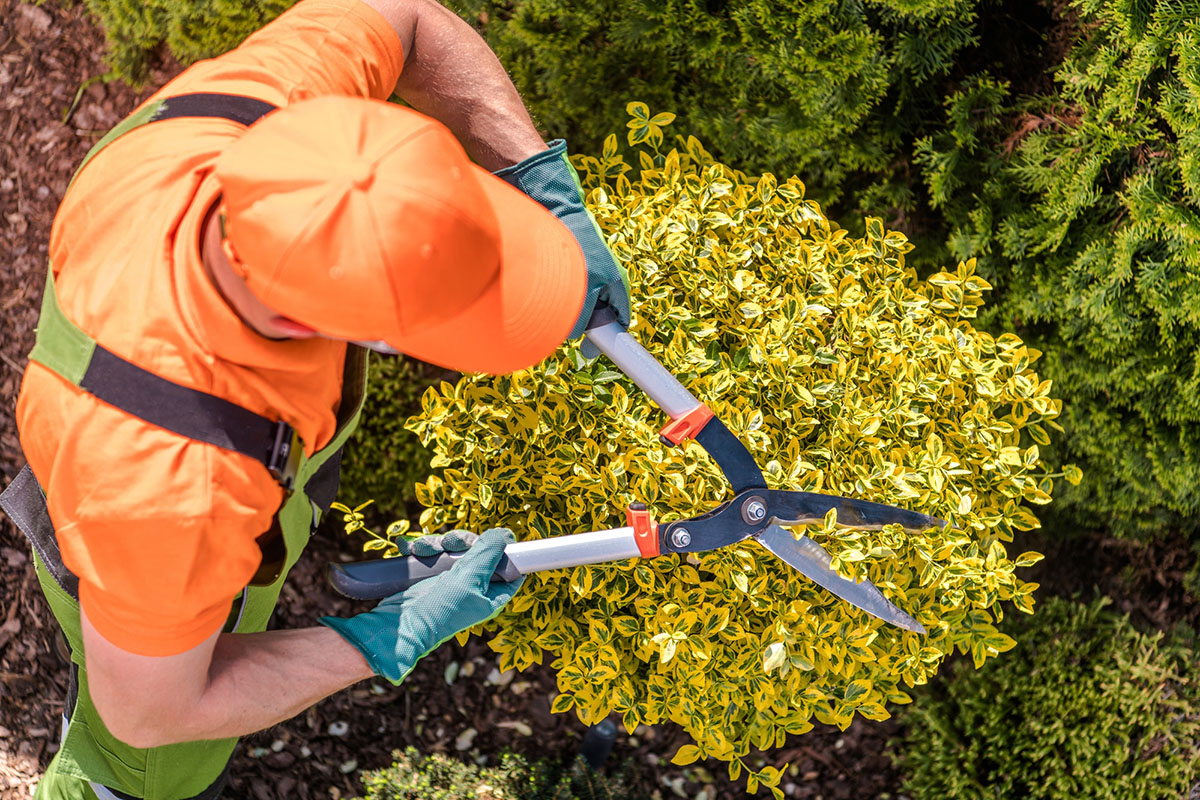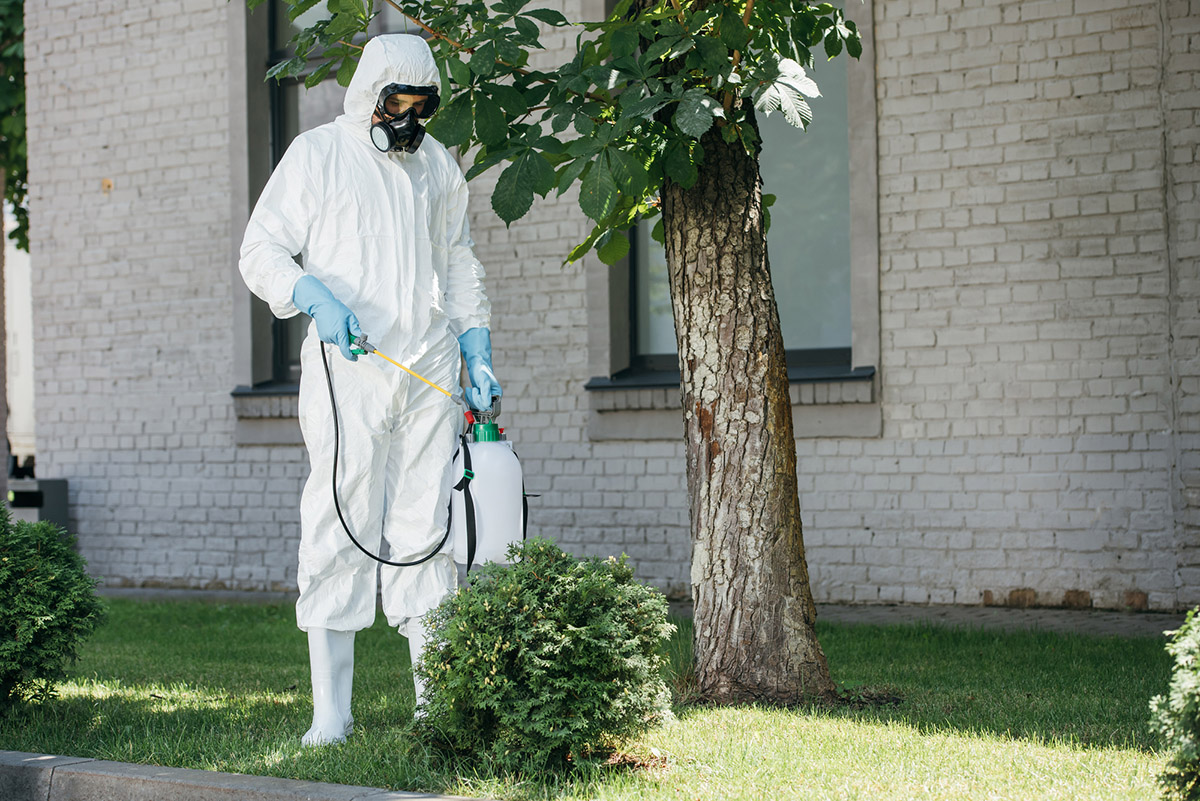

We may earn revenue from the products available on this page and participate in affiliate programs. Learn More ›
Cicadas are loud, large, and look like they popped out of a science fiction movie with their bulging eyes and veined wings. Annual cicadas provide the humming background of warmer months. Every 13 and 17 years, periodic cicadas emerge from the ground, bringing larger numbers and an incessant buzz of cicada noise.
Cicadas can pose a risk for animals and some plants and trees. They’re not harmful to humans, but their large numbers and constant noise can be burdensome. If you’re wondering how to get rid of cicadas, you’ll need to take action to keep them in check.
Time required: 2 to 4 hours for inspection, netting application, insecticide application, plus regular brief maintenance
Difficulty: Easy to intermediate
Estimated cost: $200 to $500 for spray and netting, up to $1,500 for professional extermination
Tools & Materials
Bobvila.com may earn a commission from purchases made through these links.
- Fly swatter
- Landscape netting or cheesecloth
- Hose and nozzle with a strong stream
- Fitted covers for pool, hot tub, and outdoor furniture
Before You Begin…

Adult cicadas are approximately 2 to 3 inches in length with colors ranging from metallic green to black to a dark reddish-orange. Their clear, veined wings are longer than their body. Legs are prominent and thin, and eyes are bulbous and reddish-orange or black. Chances are you’ll know that you have cicadas nearby from their sound: a pulsing, high-pitched buzz.
Cicadas may not be dangerous, but they’re not the preferred companions for outdoor activities, and cicada sound isn’t a playlist most would choose. Staying a few steps ahead can prevent a full infestation and control the stragglers.
Safety Considerations
- Cicadas don’t bite, sting, or harm humans or animals, but they may swarm if agitated. Consider sunglasses or other eye protection when hosing them off of shrubs or trees.
- Invest in a wide-brimmed hat to wear when doing any yard work during a heavy cicada season. Cicada bugs eat tree sap and will excrete excess liquid. This excretion can irritate the skin.
- Keep in mind that cicada season is also tick season. If you’re inspecting trees, deep lawns, and gardens, you’re on ticks’ home turf. Be sure to wear appropriate repellent, long pants, and socks, and check yourself for ticks afterward.
Tips for How to Get Rid of Cicadas
- Prevent cicadas by keeping shrubs and trees well-pruned and trimmed. This maintenance will give the cicadas fewer areas to hide and will make removal easier.
- Apply a preventative broad-spectrum insecticide to the yard and gardens seasonally and approximately a month prior to an expected cicada emergence.
- Begin inspecting your yard for cicadas as it warms up or as soon as you hear their distinctive song.
- Clean up deceased cicadas promptly to avoid an accumulating mess and smell.

STEP 1: Inspect your property.
Once you suspect cicadas are present, inspect commonly infested areas like trees and shrubs where cicadas choose to perch. They may blend in, so look carefully and listen for their hum. V-shaped cuts in plant leaves may also indicate cicadas. Cicadas use oviposition and make incisions into plant leaves to lay their eggs. While this is usually not detrimental to plants, it is visually unappealing. Oviposition, though, has been shown to damage apple trees and reduce their wood accumulation compared to control trees, according to the Journal of the New York Entomological Society.
Unlike crickets, cicadas can’t breed indoors. While an errant cicada might accidentally fly in through an open door, it won’t stay or reproduce. A fly swatter will be enough to knock down and stun a cicada that’s made it inside.
STEP 2: Spray insecticides.
Unlike wasps, cicadas can’t sting, so you don’t need to kill on sight. Cicada grubs will eat plant roots and females may lay their eggs on plant leaves, so you may want to protect all of your plants with an insecticide. The best choice is a broad-spectrum insecticide that is labeled as a treatment for cicadas. Look for one that promises a residual effect to control insects after the application.
Treatment times for annual cicadas are early spring and late summer. However, if your area is forecast to have an emergence of periodic cicadas, plan an extra application about a month before they’re predicted to emerge.
If cicadas are too interested in the home itself, a perimeter spray will likely help. Spray the insecticide 3 feet out from the foundation and 3 feet up the side of the structure. Coat window and door frames, soffits, and any cracks or openings in the exterior, including electrical and plumbing installations.
To protect the yard, spray the whole yard from back to front, including the lawn and ornamental trees, shrubs, and gardens. Do not spray the insecticide on fruit-bearing trees or gardens, as it can transfer into the growing produce.
Once the insecticide has been applied, keep people and pets away from the treated area for at least 2 to 4 hours, or as indicated by the directions.
Perhaps you’ve heard about the cicada killer wasp. This particular species, along with several other large wasps, can naturally reduce the number of cicadas in the area—unless they have been killed by the broad-spectrum insecticide. Check labels carefully and apply them judiciously to avoid hitting the hives of these beneficial insects, or consult a pest control expert if you’re unsure.
STEP 3: Protect trees and shrubs by using a hose to knock cicadas off plants, and invest in netting and foil barrier tape.
Cicadas are root parasites, meaning that they feed on the roots of plants and trees. Annual cicadas don’t seem to cause damage to plant roots, but periodical cicadas can affect the growth and health of trees. One study by the University of Notre Dame determined that there was no effect on the health of trees in years prior to a cicada emergence, but there was a significant reduction of tree growth in the year after an emergence.
Applying foil barrier tape to the trunks of vulnerable trees may prevent cicadas from working their way up a tree. Covering tender shrubs and fruit-bearing plants with fine netting or cheesecloth will deter cicadas from landing on them. A strong stream of water from a hose will knock insects off and stun cicadas long enough to kill and dispose of them. Cicadas aren’t fast, so they can also be picked off trees by hand.
Cicadas are risky for young apple, ash, cherry, chestnut, dogwood, elm, hickory, maple, oak, peach, and pear trees. Avoid planting these trees in periodic cicada years, and protect any young trees with netting and insecticide. The cicadas will go after the roots of these trees as well, so trees smaller than 4 feet tall may not survive.
STEP 4: Cover pools and hot tubs.
Hot tubs and pools are attractive landing zones for cicadas. Once they’re in the water, though, they are unable to get out and will die. Their carcasses may be too large for filters or circulators, which might clog and burn out the filters. Protect pools and hot tubs by covering them securely when they are not in use, and promptly remove any cicadas that do land in the water.

STEP 5: Prevent swarming by scheduling yard work in the early morning or at dusk, and wear a hat when working under trees.
Cicadas sing to attract a mate using sound vibration. What else causes sound vibration? Lawn mowers, string trimmers, and leaf blowers! These sounds may encourage cicadas to think that there’s a potential mate—or many of them—available, and they’ll come from a distance or wriggle up from the ground to investigate. Plan to perform yard maintenance in the early morning or at dusk when it’s cooler and cicadas are less active to avoid swarming.
No matter the time of day, wear a hat. Cicadas perched in the trees above will be filling themselves with sap and excreting the excess, so protect your head and neck from “cicada rain.”
STEP 6: Throw away any carcasses immediately.
Regardless of the methods you use, dead cicada carcasses will pile up. Remove these promptly. First, a pile of dead cicadas is unsightly and will begin to rot and smell. Second, live and dead cicadas attract birds, curious pets, and other animals. Especially if you used an insecticide, the carcasses can be dangerous for animals to consume. Cicadas’ wings are also tough and can lodge in animals’ throats or cause digestive distress.
If your area is experiencing a heavy cicada season, this cleanup may require more than a dustpan and broom—be prepared to pull out a snow shovel. Bury the carcasses in a deep hole, or compost them (if you didn’t use insecticide).

STEP 7: Turn to an exterminator.
Especially if you have a sizable yard or heavy infestation—or if you’re just unnerved by bugs—the purchase and application of insecticides and barriers might be a bigger job than you’re prepared for. Professional pest control services will have the equipment and supplies at the ready and will have a more experienced eye for where the cicadas are hiding in a yard, resulting in a more efficient and localized application of mitigation measures. Costs will vary depending on the size of the yard and how many strategies you want to employ. But if the yard is inundated with more insects than you are comfortable managing, the cost might be worth the peace of mind.
Following these steps may not get rid of every cicada in the yard, but they will minimize the interruption, mess, and inconvenience of these noisy visitors and allow you to enjoy warm-weather days outdoors.
